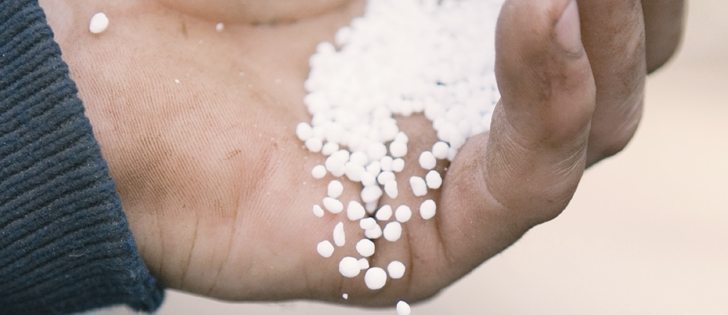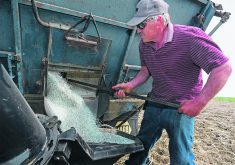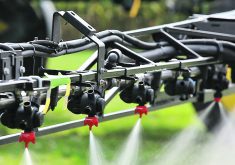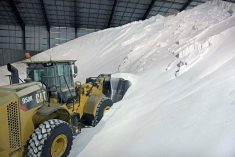Farmers are better off buying fertilizer in fall or winter rather than waiting until spring 90 percent of the time, according to Alberta Agriculture.
The department has tracked urea, ammonia and phosphate prices for the past 10 years.
“There has only been one year, and that was in 2008, that spring prices were lower than fall-winter prices,” said Jennifer Stoby, an agricultural input market analyst with Alberta Agriculture.
She encouraged farmers to talk with their retailers this fall about their upcoming needs, especially for nitrogen fertilizers.
Read Also
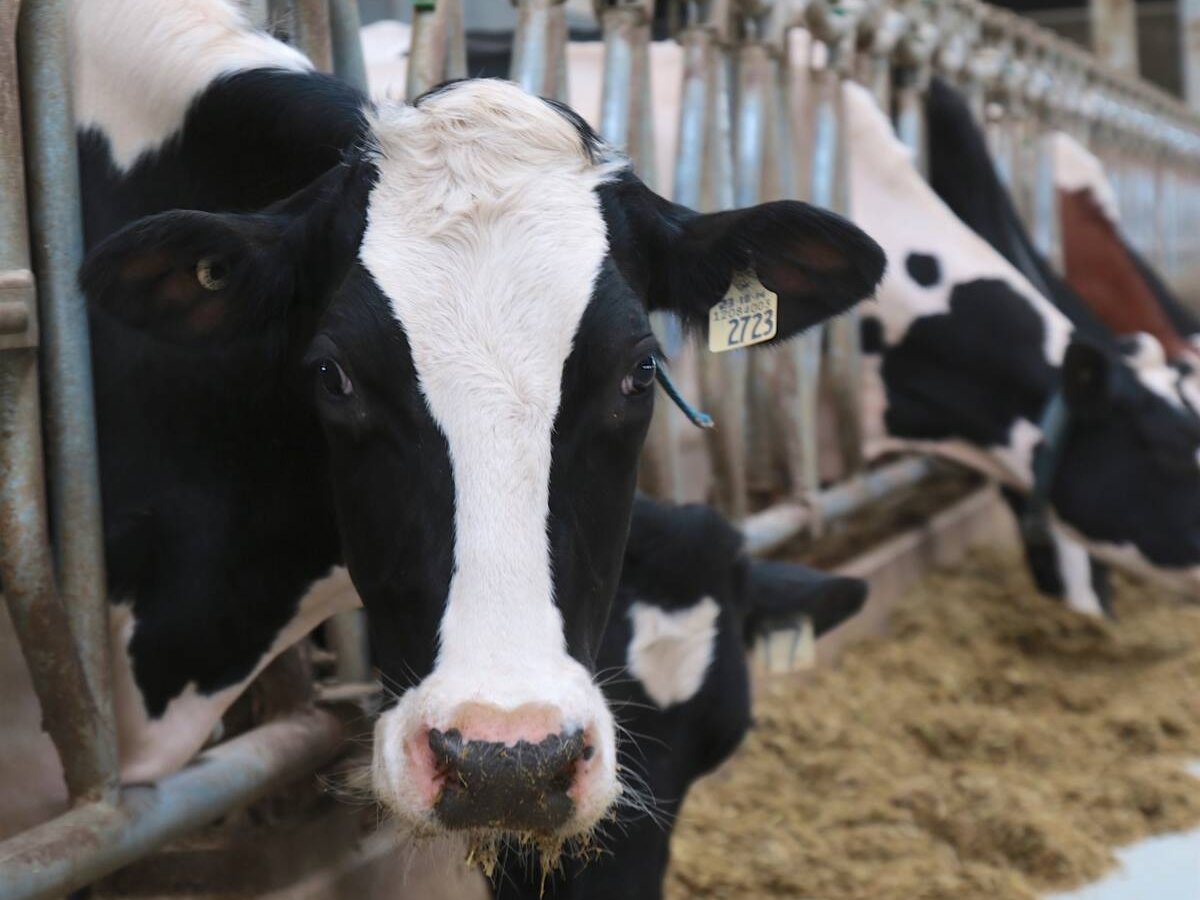
The Organization for Economic Co-operation and Development lauds Canada’s low farm subsidies, criticizes supply management
The Organization for Economic Co-operation and Development lauded Canada’s low farm subsidies, criticized supply management in its global survey of farm support programs.
“With lower crop prices, guys have been hesitant to buy fertilizer and not really making any decisions,” said Stoby. “If they do wait until spring, there might be some problems actually even getting product.”
Growers who haven’t pre-bought product have faced supply shortages for the last few years, and it could be the same scenario next year.
“Retails aren’t bringing in nearly as much product just to have on hand the same as they have in the past,” said Stoby.
Crop input providers were stung in 2008 when they bought high-priced fertilizer in winter and then incurred substantial losses when prices fell.
David Asbridge, president of NPK Fertilizer Advisory Service, said fall may be a better time to buy than winter this year because he doesn’t an-ticipate the usual winter downturn for many nitrogen products.
He believes the lows in urea markets have already been established, largely because of record Chinese exports.
“I’m not sure we’re going to see much more weakness in the urea market between now and spring,” he “We’re probably at the bottom of the urea market right now.”
That jibes with comments Yara International chief executive officer Torgeir Kvidal made during a recent conference call with investment analysts. He said Chinese urea production is down despite a significant increase in capacity, and so are exports. The country shipped 2.4 million tonnes of urea in July and August, down from 2.8 million tonnes for the same period a year ago.
Kvidal said high cost producers in China are struggling with negative margins, which could result in a “significant tightening” in global urea supplies and upward pressure on prices.
One bearish factor for prices is that U.S. farmers are expected to plant less corn, which is a big user of nitrogen fertilizer.
Informa Economics is forecasting as few as 87 million acres of the crop next year, down from 91 million acres this year. Mosaic thinks it will be 88 to 90 million acres, and Agrium is forecasting 90 to 91 million acres.
Asbridge doesn’t think corn acres will plummet to a level that would significantly affect nitrogen fertilizer demand.
He advised Canadian growers to consider booking 50 to 60 percent of their nitrogen fertilizer needs this fall.
Asbridge warned there could be a repeat of last year’s transportation problems, which would seriously limit fertilizer supplies in spring.
Forecasts call for another year of heavy snow and cold weather in much of North America. As well, massive U.S. corn and soybean crops will be tying up the rail system.
“It probably wouldn’t hurt to go ahead and start getting in line with your retailer to make sure you’re going to get what product he gets when he gets it,” he said.
Stoby worries that growers in the U.S. Midwest will buy nitrogen from Canada if what they need isn’t brought up by barge and rail from the Gulf of Mexico.
U.S. seeding starts one to two months earlier than it does in Western Canada, so that could lead to a shortage north of the border.
Asbridge expects UAN prices to stay where they’re at, while ammonia might be the only nitrogen product that could drift lower during winter.
Potash and phosphate prices also have the potential to head down this winter, largely because of the drawn-out U.S. harvest.
The U.S. corn crop was 65 percent harvested as of Nov. 2 compared to the previous five-year average of 73 percent.
U.S. growers typically apply as much as one-third of their ammonia, phosphate and potash in the fall. That likely won’t happen this year, which means more fertilizer will have to be applied during the busy spring season.
When that happens, there is a tendency for farmers to cut back on their phosphate and potash inputs or skip them altogether for one year.
Agrium is forecasting that U.S. nitrogen demand will be down two percent next year and phosphate and potash demand will drop by three percent. Mosaic believes North American potash and phosphate demand could be down three to five percent.
It is why Asbridge doesn’t think growers should be in a rush to book their phosphate and potash needs. They can probably wait until January or February.


